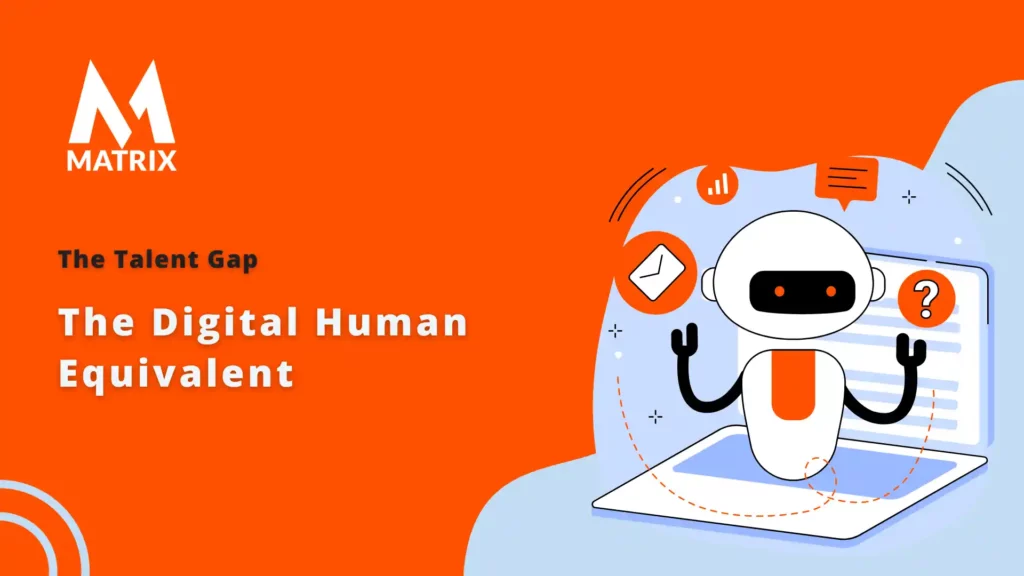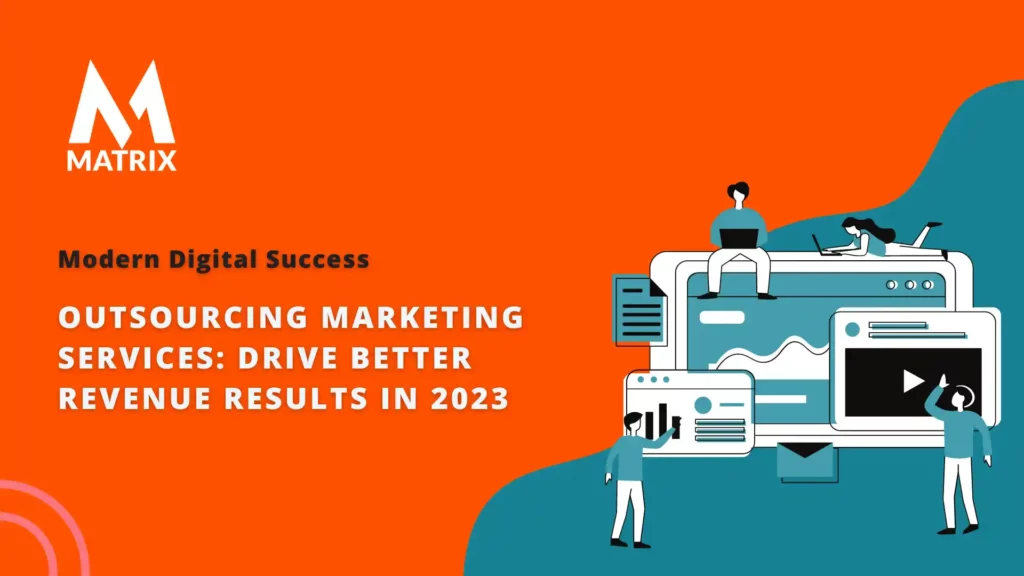What is the digital human equivalent?
Learn the digital human equivalent and how to leverage AI-office automation tools.
Pharmaceutical giant Eli Lilly last year came up with the concept of a ‘digital human equivalent.’ This approach measures the productivity of an automated process against the cost of paying a worker to achieve the same task.
Technology constantly pushes the boundaries of what was once thought impossible. With the rise of artificial intelligence and automation tools, we are seeing a new concept – the digital human equivalent.
This is a virtual representation of ourselves in the digital space, capable of performing tasks and activities traditionally done by humans. Let’s take a closer look at the possibilities digital human equivalents offer!
What is the digital human equivalent formula?
The digital human equivalent formula is a ratio of productivity of automated progress against a loaded paid employee to do the same take. Simple right?
This blog post will explore how this technology is changing how we leverage AI-enabled translation tools and their potential uses for various applications such as gaming, virtual reality, business simulations, and remote healthcare.
Are you curious about the potential of digital humans?
Discover how this new technology is changing how we leverage AI-enabled translation tools and explore its potential uses in gaming, virtual reality, business simulations, remote healthcare, and more.
Imagine a future where digital humans can interact with us in real-life scenarios. With software automation tools that can do the same work as humans, you could save time and money while achieving greater efficiency.
Please read our blog post to learn more about the digital human equivalent!
The cost of hiring a marketing manager can vary significantly depending on various factors. These include the location of the job, the industry, the size and type of the company, the specific responsibilities of the role, and the level of experience required.
According to the U.S. Bureau of Labor Statistics, the median annual wage for marketing managers was $141,490 in May 2020. However, the lowest 10 percent earned less than $74,620, and the highest 10 percent earned more than $208,000. We hire the top 10%, so we charted into the waters to help reduce not only the cost of the salary but make it more productive. We wanted to increase the revenue per head.
By implementing the MatrixAI platform, we were able to eliminate seven positions in the marketing department. I don’t mean that we came in on Monday and said hey, guess what your jobs are gone. What we wanted to be transitioned in steps. Steps that could be throttled into a more performance-based AI marketing agency.
I often get asked why do you pivot your agency so often. My simple answer is that you are dying on the vine if you’re not constantly improving. Just look at what happened in the AI industry. HubSpot, Zoho, and KEAP were caught off guard. But the traditional digital marketing agencies in inbound agencies are really getting impacted.
They never saw the productivity games and AI, and by the time they did it was too late. They were still trying to figure out digital and inbound marketing because of their hiring model. When you hire junior people and train them, you will get Junior results. There’s a bell curve for a reason.
In terms of recruiting costs, companies often spend around 15-25% of the role’s annual salary on the hiring process. This includes costs related to advertising the job, and time spent screening and interviewing candidates, and possible agency or recruiter fees.
Remember that these figures are subject to change and can vary widely. For the most accurate and up-to-date information, consider conducting research based on the specific circumstances of the role you’re looking to fill. Also, remember to factor in the costs of benefits, bonuses, and any additional perks that are part of the compensation package.
Stats from 2023 about the labor market: Who is in charge?

In 2022, statistics showed that digital humans play a larger role in the global labor market. By this time, AI-driven automation tools are estimated to have replaced 50% of the work done by humans worldwide. This includes skilled labor and jobs traditionally associated with the service industry, such as customer service, medical diagnostics, and software development.
This shift in labor is accelerated by an increasing number of businesses recognizing the advantages of using digital human equivalents. In 2022, over 40% of companies surveyed reported adopting or planning to adopt digital humans into their workforce within the next year; this figure was even higher in certain industries such as healthcare and education.
Digital human equivalents have enabled companies to reduce costs associated with hiring workers for specialized tasks. Furthermore, these automated processes can often complete complex tasks more accurately and efficiently than human staff members. This has resulted in more businesses outsourcing work to digital human equivalents over traditional employees to save time and money while achieving greater efficiency.
Additionally, studies conducted in 2022 found that companies using digital human equivalents report higher levels of engagement from their customers due to the ability of virtual assistants to provide personalized interactions with clients; this level of customer satisfaction was especially high among age groups aged 18-35 years old.
Lastly, a survey among business owners revealed that at least 70% believed digital humans benefit their organization’s bottom line, allowing them to minimize administrative costs while improving productivity across departments.
Challenges in Productivity for Financial Consultants

Financial consultants face a major challenge in productivity due to the increasing complexity of financial markets and products. As more sophisticated tools, such as AI-enabled translation software, emerge and become widely adopted by businesses for complex tasks like risk analysis, advisors need help to keep up with technological advancements and stay competitive.
To that end, many financial consulting firms have begun embracing digital human equivalents to help them boost their productivity while saving time and money. Digital human equivalents have also enabled these companies to provide personalized services tailored to each customer’s needs more efficiently than ever before.
The use of digital human equivalents in the financial services industry has become increasingly popular due to its potential to reduce costs associated with hiring workers and increase productivity. However, CIOs in this sector must grapple with the fact that there needs to be more labor available to carry out the tasks typically done by traditional employees.
For example, while automation tools have enabled financial institutions to free up their staff from mundane and repetitive tasks like data entry, they still need a team of knowledgeable and experienced professionals to manage their investments and handle customer service requests. With the increasing complexity of financial markets and products, it’s becoming more difficult for financial service CIOs to find qualified personnel with the required skillsets.
Financial institutions must always comply with various laws and regulations, which requires constant vigilance on behalf of IT departments. This is especially true when managing security systems; since financial organizations often store confidential client information, any breach or data leak can result in huge fines or sanctions. CIOs are also finding it difficult to keep up with rapidly changing regulations.
Another major challenge for CIOs in financial services is the cost of recruiting and training employees capable of handling complex tasks like risk analysis or customer service. Not only do these positions require highly skilled personnel, but they can also be quite expensive to hire due to their specialist nature; financial institutions may only be able to meet demands if they have enough resources.
Fortunately, digital human equivalents may offer a solution for many of these problems faced by CIOs in financial services. Since these virtual assistants can carry out complex tasks more accurately than humans, they can help organizations save on labor costs while ensuring better security protocols are met.
Furthermore, since AI-enabled translation software can provide personalized interactions with customers more efficiently than ever, CIOs can focus more on improving internal processes rather than worrying about customer satisfaction ratings.
1. What is the Digital Human Equivalent (DHE)?

The Digital Human Equivalent (DHE) is a virtual representation of a human being created using advanced technology, such as artificial intelligence (AI). This digital representation can interact with other humans in an environment that mimics real-life situations. It can be used for gaming, virtual reality, business simulations, remote healthcare, and more.
To create a DHE, developers use various technologies, including machine learning and computer vision models, to capture individual humans’ facial features and expressions. They then store this information in a database for future reference. The next step is to develop algorithms that enable the DHE to mimic natural conversational behavior and responses, allowing it to interact with people in realistic and meaningful ways.
Another key component of building a digital human equivalent is creating believable appearances. For example, AI-enabled software tools are used to generate realistic facial expressions and body language, which help make the experience more engaging for users. Furthermore, 3D modeling techniques also create lifelike characters that look like real people.
Finally, natural language processing (NLP) capabilities are employed so the DHE can understand and respond appropriately when asked questions or given instructions. This allows them to converse with humans in realistic ways and learn from their interactions.
With the advancement of AI-enabled translation software, DHEs can now accurately interpret languages from around the world – making them even more useful for global businesses that need access to multilingual customer service personnel or workers who operate across borders.
As technology continues to evolve, digital human equivalents are becoming increasingly sophisticated – providing us unprecedented opportunities for automation in healthcare, finance, customer service, and beyond. By leveraging this cutting-edge technology, companies can significantly reduce overhead costs while ensuring that their customers receive personalized services tailored to their needs.
2. How Can DHEs Help Financial Consultants Improve Productivity and Reduce Costs
Digital human equivalents (DHEs) are revolutionizing how financial consultants interact with customers and carry out their daily tasks. With the help of AI-enabled translation software, they can now quickly and accurately interpret a customer’s language, enabling them to provide more personalized services. This helps improve customer satisfaction while reducing costly mistakes due to inaccurate translations.
Moreover, by using DHEs in place of manual labor, financial institutions can save on labor costs while ensuring that they comply with stringent security protocols. For example, since DHEs are automated, they can be programmed to enforce certain processes like checking for identity fraud or verifying transaction data to keep sensitive information secure. Additionally, by engaging digital humans for customer service interactions, companies can free up human employees for more complex tasks – helping to reduce overall costs and increase efficiency.
Furthermore, DHEs are becoming increasingly adept at understanding customer needs and responding accordingly. With the help of advanced natural language processing (NLP) capabilities, DHEs can accurately interpret customer queries and provide meaningful solutions or advice. In addition, AI-enabled translation tools allow them to communicate with customers from around the world without any language barriers – providing an invaluable tool for international businesses dealing with customers in multiple languages.
In addition to these benefits, DHEs also offer scalability in customer service operations; since they do not require rest or breaks as human workers do, they can be employed 24/7 without ever missing a beat – helping organizations maximize productivity and ROI. In addition to this, because DHEs have been pre-programmed with vast amounts of information about markets and products, they can provide customers with tailored advice based on their individual needs and preferences – further increasing their value as a tool for financial consultants.
Overall, digital human equivalents are changing how financial consultants interact with customers while providing valuable cost savings through automation. By leveraging the power of AI-enabled translation tools and advanced natural language processing capabilities, businesses can achieve improved efficiency levels while receiving personalized services tailored specifically to their needs. As technology continues to evolve, so will these powerful tools; soon enough, we may see an era where digital humans become an important part of our day-to-day lives – revolutionizing how we interact with technology and paving the way for a more convenient future.
3. The Challenges of Finding Qualified Personnel for Complex Tasks in Financial Services
Finding qualified personnel for complex tasks in financial services can be difficult due to the specialized knowledge and expertise required. Additionally, there is an increasing demand for qualified staff who can handle multiple roles simultaneously and are experienced in working with various software automation tools.
However, finding candidates with these qualifications can often prove challenging; businesses must rely on rigorous interviewing processes and background checks to ensure that they hire only the most qualified individuals.
Furthermore, since many of these positions require advanced technical skillsets or experience with specific technologies, employers must also allocate time and resources toward training existing employees to keep them up-to-date on current trends and techniques. Ultimately, companies must remain diligent when searching for new hires to maintain a highly efficient workforce capable of handling tasks efficiently while providing quality customer service.
4. Keeping Up with Rapidly Changing Regulations in Financial Services
Keeping up with rapidly changing regulations in the financial services sector can be a daunting task. Banks and investment laws are continually introduced and must be updated or tweaked to remain compliant with changing market conditions. Therefore, staying informed is essential for any business operating in this field.
From an organizational perspective, firms must have the necessary processes to ensure compliance with these ever-changing regulations. This includes identifying areas where changes to policies or procedures could help ensure compliance and reviewing current procedures regularly to identify and address potential risks.
By regularly engaging with stakeholders such as legal professionals and industry experts, businesses can stay up-to-date on the latest developments in their sector and take proactive steps to remain compliant with new legislation.
Furthermore, leveraging digital human equivalents (DHEs) powered by AI-enabled translation tools can provide organizations with valuable insights into regulatory changes; by integrating the relevant information into their AI models, DHEs can provide accurate daily updates on any regulatory developments without requiring manual intervention from staff members. This helps save time and resources, allowing organizations to devote more attention to maintaining compliance in other areas of operations.
In addition to regular scans for regulatory updates, financial service providers should also consider investing in sophisticated risk management tools that provide real-time analysis of market conditions so they can quickly respond to changing scenarios without compromising customer safety or profitability. Such tools can also alert businesses when certain thresholds have been met – enabling them to take swift action before any damage occurs.
5. Using Automation Tools to Free up Staff from Repetitive Tasks
Using automation tools to free up staff from repetitive tasks is an effective and efficient way to enhance the productivity of any business. By leveraging AI-enabled software, companies can provide employees with a break from mundane or manual processes, enabling them to focus on more complex and rewarding tasks that require higher levels of expertise.
Automation tools are becoming increasingly popular in various industries due to their ability to automate and optimize processes that would otherwise take much longer for employees to complete manually. For example, automation tools can be used in financial services and banking to streamline data entry and process transactions quickly; in manufacturing, robots can assemble parts with precision; and in healthcare, AI-powered diagnosis systems can help physicians swiftly identify anomalous conditions accurately.
The benefits of using automation tools go beyond freeing up staff resources; they also provide businesses with enhanced accuracy when dealing with large datasets or performing calculations. Automated systems eliminate the possibility of errors due to human oversight or miscommunication while also providing greater accuracy than manual methods when it comes to analyzing data or executing instructions. Furthermore, automating certain processes helps reduce costs associated with labor wages and materials required for production.
On top of this, automation tools often come equipped with features such as scheduling capabilities or notifications that allow employers to monitor progress and adjust tasks accordingly if needed. This enables businesses to keep track of employee performance without having constant supervision, saving time and energy, which can then be allocated towards other areas of operations.
6. AI-Enabled Translation Software for Personalized Interactions with Customers
AI-Enabled Translation Software for Personalized Interactions with Customers is becoming increasingly popular among businesses because it provides highly accurate translations in real-time. This technology can bridge the gap between customers and companies, enabling them to communicate more effectively without relying on manual translators.
Integrating AI-enabled translation tools into customer service systems allows companies to create a more personalized and meaningful customer experience.
This software can quickly generate accurate translations of customer inquiries or feedback in multiple languages, thus eliminating the need for customers with limited English proficiency to use manual translators. Additionally, these software solutions offer superior accuracy compared to manual methods; they can also identify subtle nuances in language that traditional translators may miss.
Effective communication is essential to successful customer service operations; without it, customers may become frustrated and decide not to purchase from a company again – leading to lost revenue and decreased brand loyalty. To ensure that each customer interaction is smooth and productive, businesses must utilize tools that allow them to communicate with clients in their native language efficiently.
AI-enabled translation software provides this solution; not only does it make conversations easier for both companies and customers alike, but it also ensures that no important details get lost in translating messages back and forth between parties.
In addition, leveraging AI-powered translation software can help organizations improve compliance with local regulations or laws concerning data privacy – something that would otherwise require significant resources if done manually.
By utilizing machine learning algorithms in combination with natural language processing (NLP) techniques, these tools can automatically detect any keywords related to legal processes or frameworks within communications between clients and employees and then flag them accordingly – ensuring that all conversations are conducted within legal boundaries set by the organization’s regulatory framework.
Overall, AI-enabled translation software is invaluable for businesses looking to engage with international audiences while providing consistently high customer service regardless of language barriers.
7. Benefits of office automation
Office automation combines advanced computer technologies and software designed to facilitate more efficient operations within an office environment. This technology can benefit greatly, from improved productivity and better communication to increased employee satisfaction and reduced costs.
One major advantage of office automation is improved productivity. By using software-based tools such as document management systems, employees can more quickly perform tasks that would have previously taken a long time to accomplish manually.
Automation tools can also help streamline processes by eliminating redundant steps or consolidating multiple tasks. Automated systems are often integrated with other technologies, such as voice recognition software, allowing faster data entry or retrieval.
Another benefit of office automation is improved communication between employees and departments. For example, emails can be sent quickly and easily with automated systems, allowing for colleague collaboration. Automated workflows can also be implemented to allow documents to be routed quickly between departments, reducing the time needed for review or approval processes. Finally, many automated systems have built-in instant messaging clients, allowing employees to communicate in real time without waiting for an email response.
In addition to improved productivity and communication benefits, office automation can lead to greater employee satisfaction. Automated systems make it easier for employees to find the necessary information and carry out their assigned tasks more efficiently than ever before. With fewer manual tasks in their daily duties, staff members will often feel less stressed about their work responsibilities, leading to greater job satisfaction.
Finally, automated office technology can also reduce costs associated with running a business due to its capability to streamline processes and eliminate redundancies in daily routines.
Automation eliminates the need for manual data entry or document sorting, thus reducing labor costs considerably while at the same time increasing accuracy levels due to its reliance on sophisticated algorithms rather than human error-prone processes. Furthermore, automating repetitive tasks means that fewer resources are devoted to freeing up capital which may be used elsewhere in the organization’s pursuit of other goals, such as expansion or innovation initiatives.
Overall, there are numerous advantages associated with office automation, including increased productivity levels through streamlined processes as well as greater employee satisfaction due to reduced labor demands coupled with improved communication capabilities between staff members and departments alike, leading ultimately towards a more efficient working environment conducive towards cost savings over time too thereby creating a win-win situation all around both now and in the future too!
Conclusion
In conclusion, office automation is a powerful technology that can benefit businesses of all sizes. The advantages of automated systems are clear, from improved productivity and communication to reduced costs and increased employee satisfaction.
By leveraging this type of technology in their operations, companies can not only become more efficient but also save money over time and improve staff morale.
With its ability to streamline processes while eliminating manual labor tasks simultaneously, office automation is an invaluable tool for any organization looking to optimize its performance levels today and beyond!
General FAQs
What is a digital human equivalent?
A digital human equivalent is a virtual representation of ourselves in the digital space, enabled by advanced computer technologies and software. This technology can be used for various applications such as gaming, virtual reality, business simulations, remote healthcare, and more. It allows for humans to interact with each other in real-life scenarios and streamline processes by eliminating redundant steps or consolidating multiple tasks through automated systems. Matrix Marketing Group can help create custom digital human equivalents tailored to fit specific needs on an individual level.
What is OpenAI?
OpenAI is an artificial intelligence research company co-founded by Elon Musk and other tech giants. It works to develop technologies that enable humans to work together with intelligent machines. OpenAI specializes in building deep learning algorithms, natural language processing tools, and robotics platforms used to drive innovation in computer science, machine learning, artificial intelligence, and robotics. OpenAI aims to ensure that AI technology will benefit all humanity by promoting responsible development practices at scale.
What is chatGTP?
chatGTP is a software automation tool for businesses invested by Microsoft. It is an AI-enabled translation platform that enables companies to understand and interact with their customers in multiple languages.
What is dall-e?
Dall-e is a new artificial intelligence platform developed by OpenAI that uses natural language processing and generative image modeling to create images from text captions. It can produce imaginative pictures of animals, objects, scenes, and more from just a few words typed into the system.




